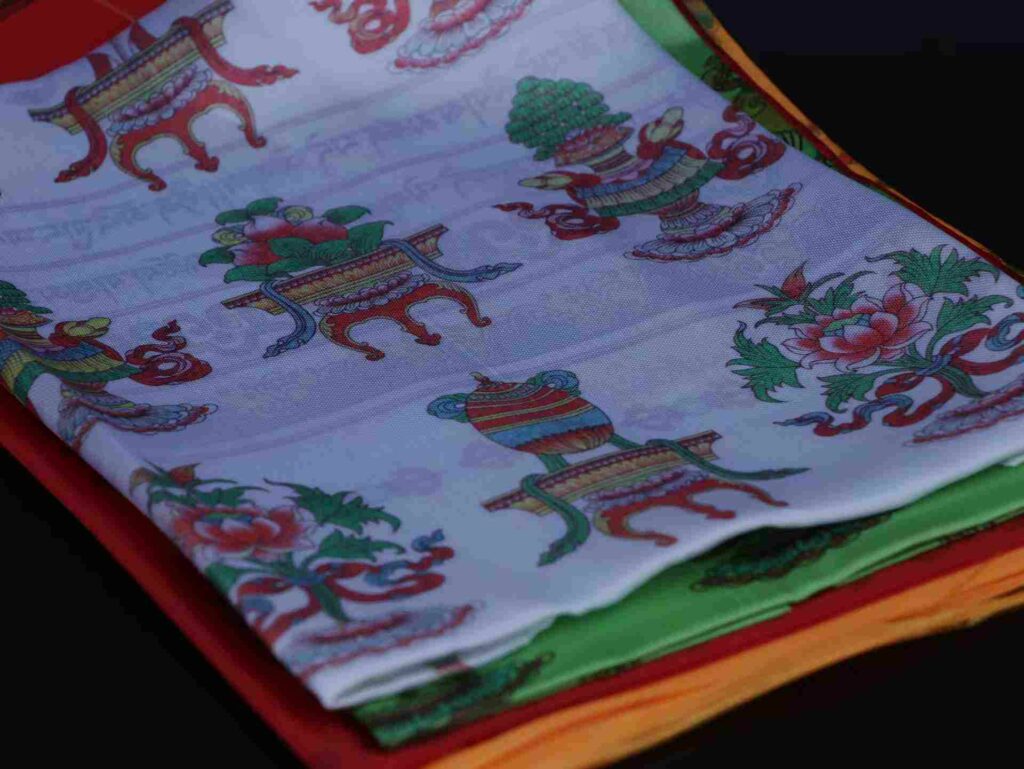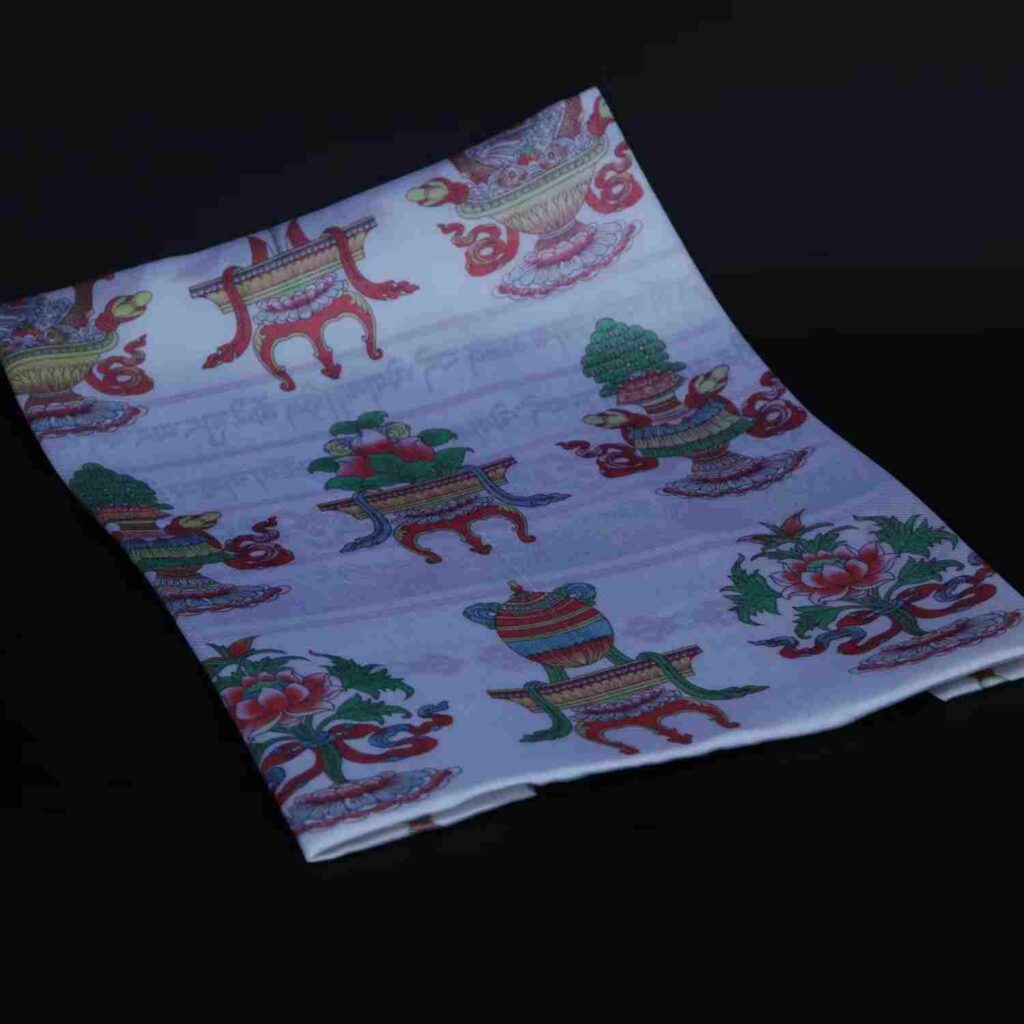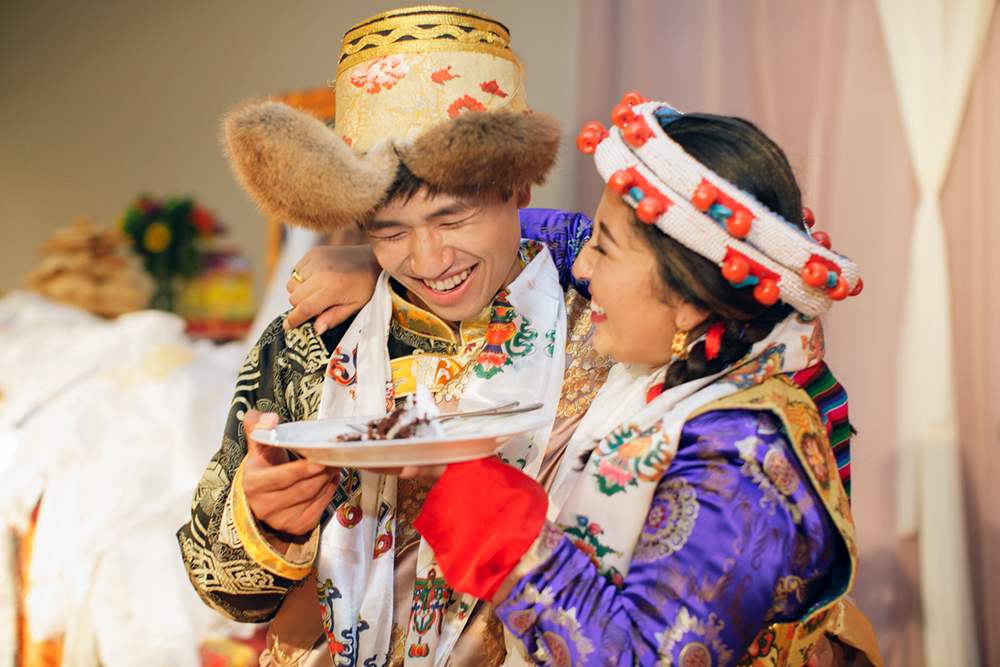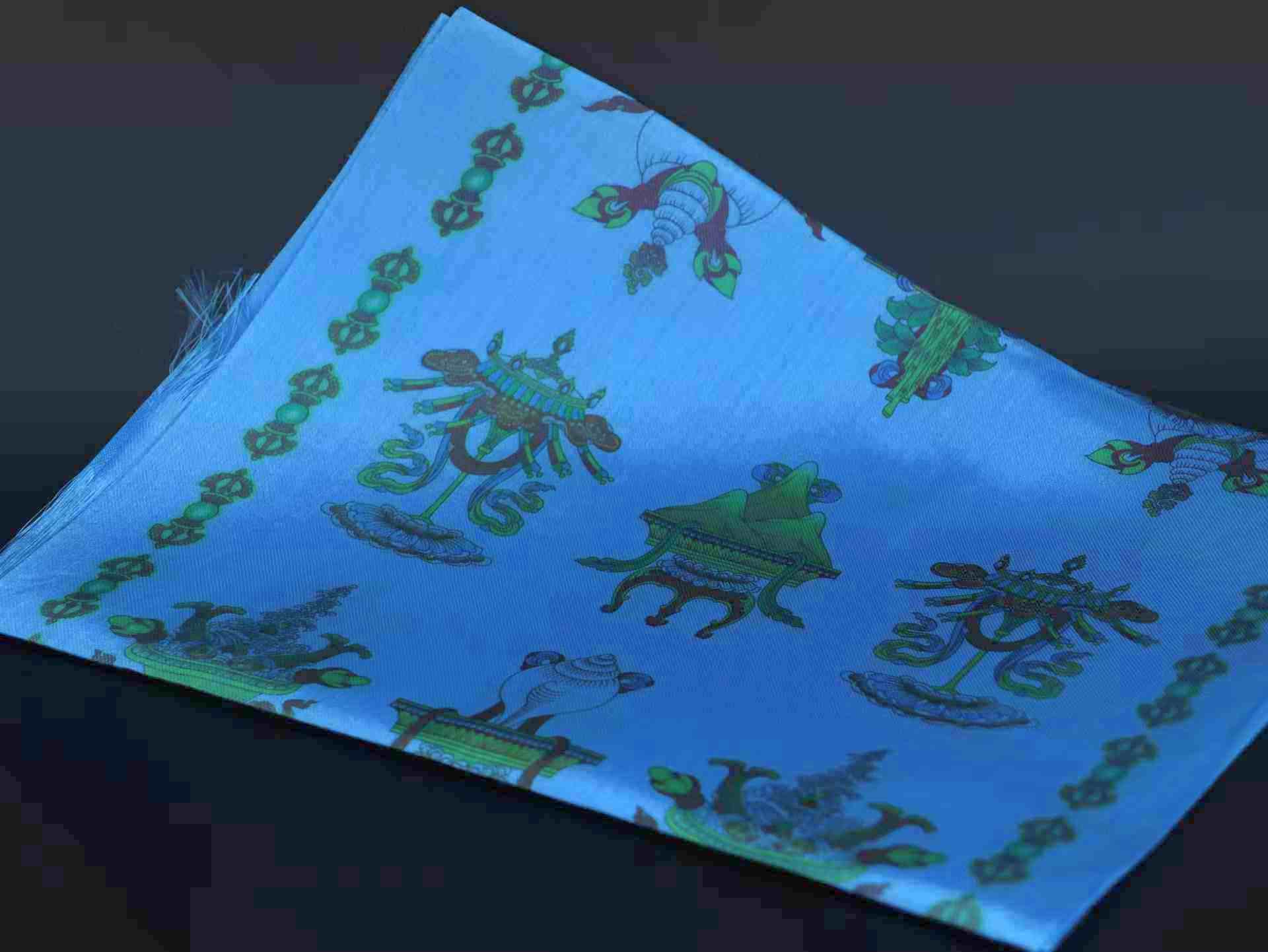In Tibetan or Buddhist culture, being offered a Tibetan scarf is one of the highest forms of greeting you can get. Also known as Khata, Khada, or Hada, this scarf holds deep cultural and symbolic significance in Tibetan society. With vibrant colors and intricate designs, the Tibetan scarf is beautiful and filled with rich meanings. The significance of the Tibetan scarf runs deep in various aspects of life. These aspects of life include religion, hospitality, and social customs.
Here we will explore the significance of Tibetan Scarf/ Khata/ Khada/ Hada. So without any further ado, let’s get started!
Religious Significance of Tibetan Scarf

The Tibetan scarf, or Khada, is prominent in Tibetan Buddhism. Buddhist have deep spiritual connections with this cherished accessory. Some of the religious significance of the Tibetan Scarf are as follows:
Offering and Respect
In Tibetan Buddhism, Khada or Tibetan scarf is used as an offering. Tibetan scarf is presented to lamas, monks, and sacred objects. This form of offering Khatas/ Tibetan scarves is seen as a gesture of reverence, respect, and devotion to the religious figures. This offering also symbolizes a spiritual connection between the act of the giver and the receiver.
Purity and Blessings
The Tibetan scarf symbolizes the spiritual connection between the giver and the receiver. It also symbolizes purity and blessings. The Khada represents purity in both its physical and symbolic meaning. As the Tibetan scarf is generally made from silk or velvet. The material and color of Khada represent the purity of mind, body, and speech. Additionally, the scarf is believed to carry blessings from the deities, gurus, and enlightened beings. You receive their blessings by receiving the Khata/ Khada/Tibetan scarf.
Wish Fulfillment
Besides blessing, the Tibetan scarf also signifies the fulfillment of wishes. In Buddhism, the act of wearing or presenting the Khata is often followed by wishing for well-being. In this process, the presenter wishes for your well-being. Therefore, the scarf serves as a medium for bringing the wishes of enlightenment, hope, and happiness. There is a belief that the pure wishes expressed through the Tibetan scarf manifest in positive outcomes.
Ritual Offerings
Besides fulfilling wishes, the significance of the Tibetan scarf extends to religious offerings and ceremonies. The scarves are used in ceremonies such as initiations, empowerments, and pujas. In these ceremonies, Tibetan scarves are offered to the deities, statues, and sacred texts. This is done by wrapping the scarves around the religious objects. When wrapped around or hung on these sacred objects, the Khata signifies the act of paying respects. It also signifies devotion and a deep connection to the spiritual and divine.
Protection and Auspiciousness
In addition to all we have mentioned, Khada/ Khata/ Tibetan scarf also possesses protective qualities. Wearing or being presented with these scarves is believed to protect you from negative energies, obstacles and harm. Therefore, in Buddhist traditions, Khata is often given to loved ones for protection.
These are just some of the religious significance of the Tibetan scarf. But from this, you can guess that this scarf is deeply associated with religious and spiritual practices. In these practices, the Tibetan scarf functions as an expression of devotion and blessings. The scarf also functions as a symbol of connection to the spiritual realm.
Cultural Significance of Tibetan Scarf

Besides being religiously significant, the Tibetan scarf has deep cultural significance. This scarf is deeply intertwined with the regions touched by Tibetan and Buddhist cultures. Therefore, these scarves reflect a wide range of cultures’ traditions, customs, and values. Some of the cultural significance of Tibetan scarves are as follows:
Hospitality and Welcoming gesture
In many Tibetan and Buddhist cultures, offering khatas is integral to hospitality. In these cultures, offering a Tibetan scarf when welcoming guests is the tradition. This act of offering the Tibetan scarf is seen as a symbol of a warm welcome and kind hospitality. This form of hospitality and welcoming gestures strengthens social bonds and promotes goodwill.
Celebrations and Festivals
Along with being the symbol of hospitality, the Tibetan scarf is integral to celebrations and festivals. Khata symbolizes blessings and well wishes in many Tibetan and Buddhist festivals and ceremonies. These ceremonies include festivals such as Lhosar (New Year) and weddings. In these festivals and ceremonies, the Tibetan scarves also signify the act of wishing well for accomplishing a milestone in life amongst Tibetan people.
Traditional Wear
Besides being used in ceremonies and festivals, Tibetan scarves function as a part of traditional wear as well. In Tibetan and Buddhist cultures, the scarf is draped around the neck, worn across the shoulders, or tied around the waist. When used as a part of traditional wear, the colors and designs vary depending on the specifics of the culture. They can also vary depending on the personal choice of the wearer as well. That said, this variety shows the diversity and richness among the communities.
Symbol of Love and Affection
In addition to being a part of traditional wear, Tibetan scarves are exchanged between loved ones and family. In this form of culture, the exchange of Khata serves as a gesture of love and affection. Similar to how the exchange of Tibetan Khata symbolizes purity, good wishes, it also symbolizes love and affection in this context. The exchange of Khada/ Khata between loved ones and family is a representation of the emotional connection.
Cultural Identity

Source: Central Tibetan Administration
Alongside being the symbol of love and affection, the Tibetan scarf also symbolizes cultural identity for Tibetan peoples. The data signifies the cultural identity and pride of Tibetan Culture. Tibetans and Buddhists wear this scarf to symbolize their heritage and unity. Therefore, it is often seen during cultural events, gatherings, and rallies associated with Tibetan and Buddhist culture. This serves as a reminder of the collective strength and spirit of the Tibetan peoples.
Besides these, there are many other cultural significance of the Tibetan scarf. But from what we have said so far, you can get the general gist regarding the significance of the Tibetan scarf in the culture and traditions.
Conclusion
The Tibetan scarf is a beautiful fabric with intricate designs, rich symbolism, and deep significance. The significance of the Tibetan scarf is many. From being the symbol of welcome and greetings to being an act of offering prayers to the deities, its significance is deep.
Here we explored some of the significance of the Tibetan scarf. But we hope you found this helpful. If you want more insights into spiritual accessories, check out our other blogs. Do remember us at Nirvana Mala if you want to buy the best religious and spiritual accessories. And as always, thank you for reading till the end.
FAQ on Tibetan Scarf
Q: Why do Tibetans give white scarves?
A: In Tibetan culture, offering the Khata/ Khada/ Tibetan Scarf is a customary tradition. This gesture signifies the offering of well wishes, purity, and blessings on you.
Q: What is Tibetan Scarf Called?
A: A Tibetan scarf is also known as Khata, Khada, Khatang, and Hada.
Q: What does a white scarf symbolize?
A: In Tibetan culture, the white scarf symbolizes purity, goodwill, auspiciousness, and compassion.

